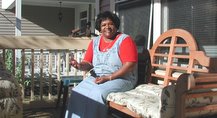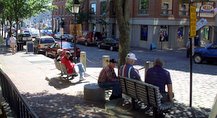|
Goal: Meet the Housing Needs of Older Adults
Older adults face an array of housing challenges. Many live in homes that lack accessibility features, are unaffordable or energy inefficient, or are located far from important destinations and amenities. Others need various kinds of assistance to maintain their independence and autonomy but cannot afford the supportive services that would allow them to age successfully in a residential environment. This toolkit provides a detailed exploration of these and other challenges facing older adults and describes a range of promising policies that some communities are adopting to address them. Click here to view a Webinar introduction to the toolkit, presented as part of Housing Solutions Week 2010.(Note: The Webinar file is very large and will take some time to load.) |
Provide accessible, safe, and affordable homes  Build, modify, and preserve homes that are accessible and affordable to older adults with a variety of incomes and abilities. | Improve access to social services and transportation options  Coordinate the delivery of services and public transit options with housing for older adults to help meet changing needs and preserve autonomy and independence. | Support housing models geared to older adults Enhance consumer choice by providing a range of residential alternatives that meet the needs and preferences of older adults. |